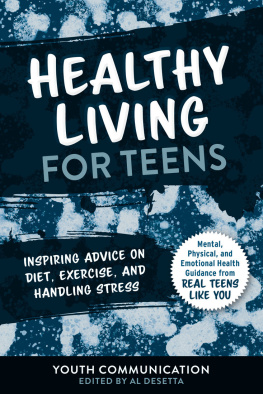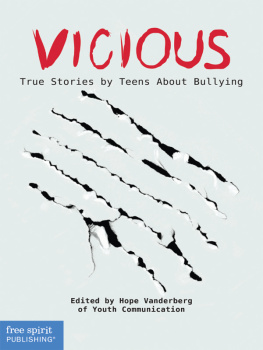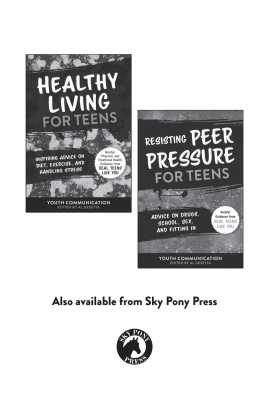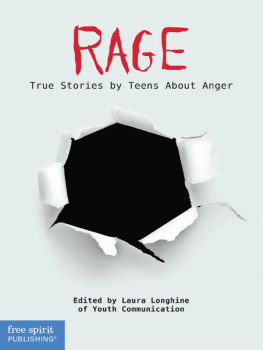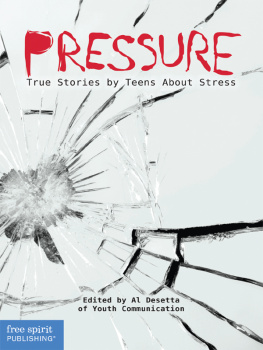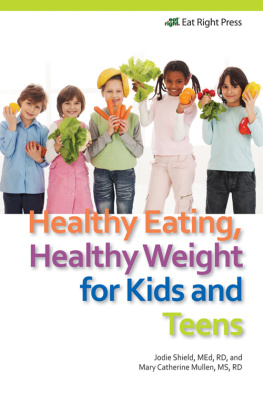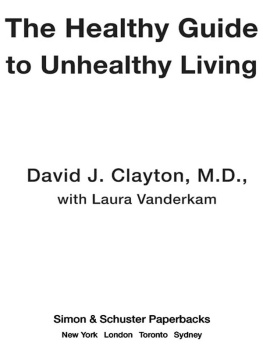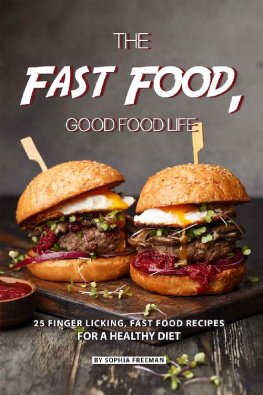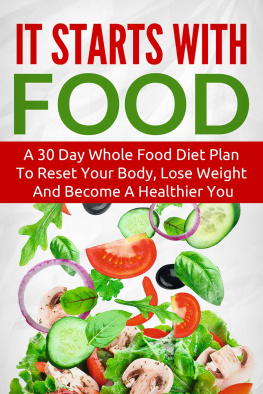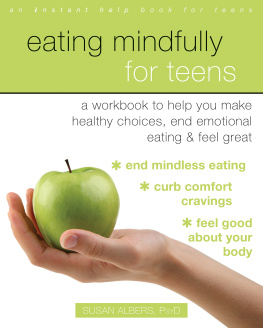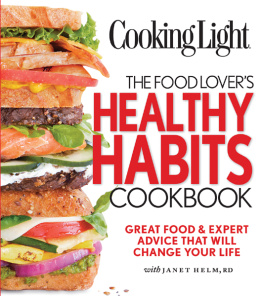
This arrangement copyright 2021 by Youth Communication
Originally published as Healthy Living in 2010 by Youth Communication.
Additional stories appeared in Represent, New Youth Connections, and issues of YCteen.
All rights reserved. No part of this book may be reproduced in any manner without the express written consent of the publisher, except in the case of brief excerpts in critical reviews or articles. All inquiries should be addressed to Sky Pony Press, 307 West 36th Street, 11th Floor, New York, NY 10018.
Sky Pony Press books may be purchased in bulk at special discounts for sales promotion, corporate gifts, fund-raising, or educational purposes. Special editions can also be created to specifications. For details, contact the Special Sales Department, Sky Pony Press, 307 West 36th Street, 11th Floor, New York, NY 10018 or .
Sky Pony is a registered trademark of Skyhorse Publishing, Inc., a Delaware corporation.
Visit our website at www.skyponypress.com.
10 9 8 7 6 5 4 3 2 1
Library of Congress Cataloging-in-Publication Data is available on file.
Executive editors: Keith Hefner and Laura Longhine
Contributing editors: Marie Glancy, Nora McCarthy, Maria Luisa Tucker, Tamar Rothenberg, Katia Hetter, Hope Vanderberg, Kendra Hurley, Rachel Blustain, Sasha Chavkin, Andrea Estepa, Virginia Vitzthum, Autumn Spanne, and Holly St. Lifer.
Cover design by Daniel Brount
Print ISBN: 978-1-5107-5990-9
Ebook ISBN: 978-1-5107-5991-6
Printed in the United States of America
CONTENTS
Part One:
Getting Healthy: Giving Up Bad Habits
| Edwin Mercado
| Evelyn Gofman
| Carmen Rios
| Carmen Rios
| Antwaun Garcia
| YC Staff
| Anonymous
| Antwaun Garcia
| Anonymous
Part Two:
The Foundation of Health: Eating Right
| Various Writers
| Elsa Ho
| Hattie Rice
| Chantal Hylton
| Stephanie Hinkson
| Anonymous
| Anonymous
| Erica Harrigan
| Suzy Berkowitz
| Kamaal Dashiem Crumpton
| YC Staff
| YC Staff
Part Three:
Staying Healthy: Dealing with Stress
| Viveca Shearin
| Natalie Olivero
| Chantel Morel
| Anonymous
| Hande Erkan
| Cynthia Orbes
| Nakese Bullock
| Niya Wilson
| Ashunte Hunt
| Shant Brown
| Emily Orchier
INTRODUCTION
In Healthy Living for Teens, teens show that its possible to overcome bad habits and lead healthy lives in a time when substance abuse, junk food, and obesity are major social problems.
In the first part of the book, several writers describe how they fell into unhealthy habits. Edwin Mercado, 17, has been smoking since age 12 and knows he has to quit but cant. Evelyn Gofman hates smoking but finds herself in the dilemma of dating a smoker. To deal with stress and loss in his life, Antwaun Garcia starts abusing alcohol and drugs.
But most of these writers are able to change their bad habits into good ones by making healthier choices. Antwaun realizes that substance abuse, instead of helping him, only brings out his demons, and he finds better ways to deal with his emotions. The anonymous author of Starving for Acceptance considers herself chubby and wants to look like the skinny girls in her school. She embarks on a dangerous program of losing and then regaining large amounts of weight. Eventually she realizes that being healthy doesnt mean starving yourself or conforming to stereotypical notions of female attractiveness.
In a second story, Antwaun Garcia describes how he was in good shape until age 15. Then, everything changed.
I would stay out late eating street food, the usual Chinese food, pizza, beef patties, Oreos, and Doritos, Antwaun writes. I began to gain a whole lot of weight. Between ages 15 and 17, I must have gained about 150 pounds.
Realizing this path is a dead end, he embarks on a rigorous program of working out and sticking to a better diet to get back in shape.
The second part of the book focuses on proper nutrition, the foundation of good health. The teen writers make surprising discoveries about themselves and their diets, while learning how to eat in healthier ways.
When Elsa Ho and her friends take a vacation with no adult supervision, theyre thrilled they can make their own food choices.
We ferociously munched on Doritos and gummy worms, she writes. Our parents would never allow us to eat junk food right before dinner, but since there were no parents in the house, we did as we pleased. But after a few days, eating whatever they want loses its appeal.
Not only was the junk food not satisfying, but we... felt sluggish, bloated, nauseated, and completely lethargic, Elsa writes. We yearned for some apples and salad... After my unhealthy vacation, I learned that not caring what I eat will leave me feeling ill.
Seeking to understand her fast food addiction, Chantal Hylton interviews a former commissioner of the US Food and Drug Administration, who explains that most packaged and restaurant food contains sugar, fat, and salt to get us hooked.
The anonymous author of My Hood Is Bad for My Health wonders why healthy food is scarce in poor neighborhoods and describes the difficulties of living with a grandmother who cooks mainly with meat and oil.
Horrified by how animals are treated after watching a video on slaughterhouse practices, Suzy Berkowitz tries to become a vegetarian. But having grown up among carnivores, becoming a complete vegetarian isnt a viable option, so she makes her contribution by boycotting meat at fast-food restaurants.
The third section of the book looks at how teens can stay healthy by dealing with stress instead of allowing it to rule their lives and develop into bad habits.
Viveca Shearin overcomes her fear of having an asthma attack, realizing she cant live her life in a bubble. Cynthia Orbes deals with problems by playing vigorous games of handball. Niya Wilson turns to yoga to deal with stress while Ashunte Hunt writes poetry. In the books final story, Emily Orchier spends so much time lying on the couch in a deep depression that she worries her mother will soon have to dust her. But then she starts taking long walks, her mood lifts, and she realizes how exercise and emotional health are inextricably linked.
Healthy Living for Teens will help teens understand the basics of good health and learn practical ways to achieve it.
PART ONE
GETTING HEALTHY: GIVING UP BAD HABITS
TALES OF A 17-YEAR-OLD SMOKER
By Edwin Mercado
I smoked my first cigarette when I was 12. My father, who smokes, was cleaning up the day after a party. He lit a cigarette, took two drags, and just left it in the ashtray. When he left the room to go to sleep, I saw my opportunity. It was a spur-of-the-moment thought. Edwin, take a drag, I said to myself.
I guess I wanted to try it because just about everyone in my family smokes or used to smoke: my father, mother, grandfather, aunts, uncles, and my older sister. Then I thought, But what if you get caught? I was going crazy wondering whether I should take a drag.
I finally decided to go for it, so I took about five drags of the cigarette. My first impression of smoking was terrible. The taste was nasty and I felt like throwing up. But there was something about it I liked. Smoking made me get a light-headed rush and that felt kind of good. I wanted to feel that same rush again. So I started stealing cigarettes from my father and smoking them in my room or the bathroom.
Next page
